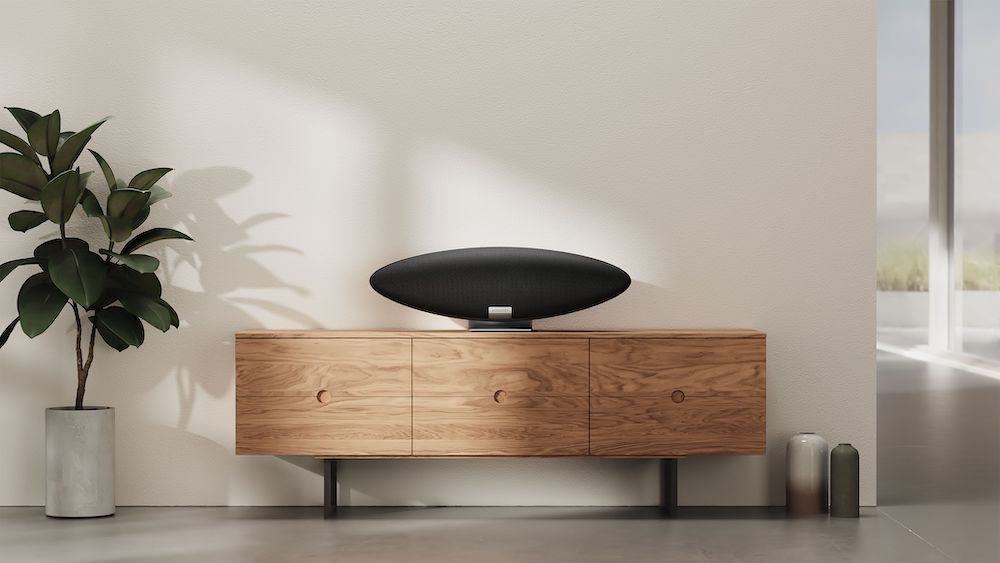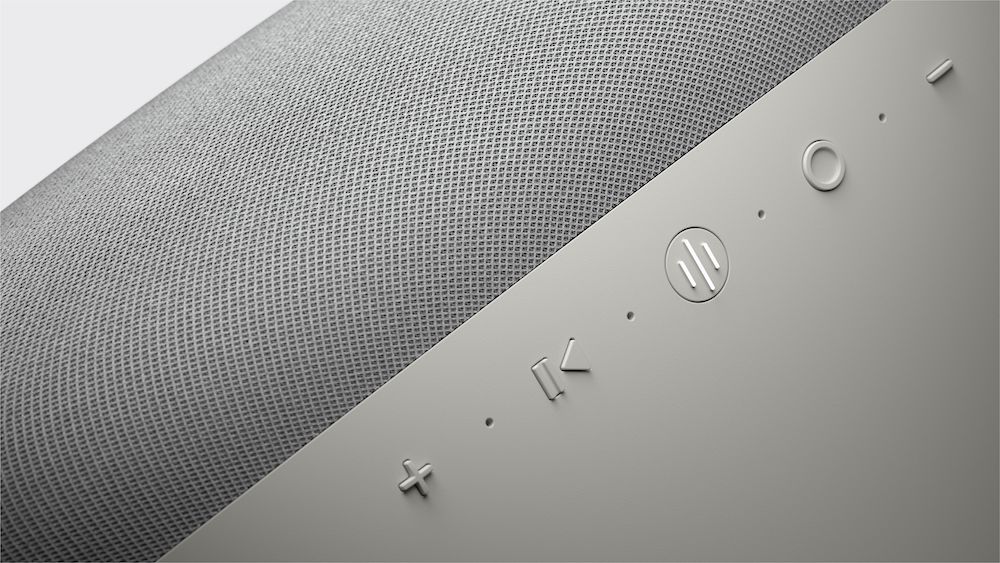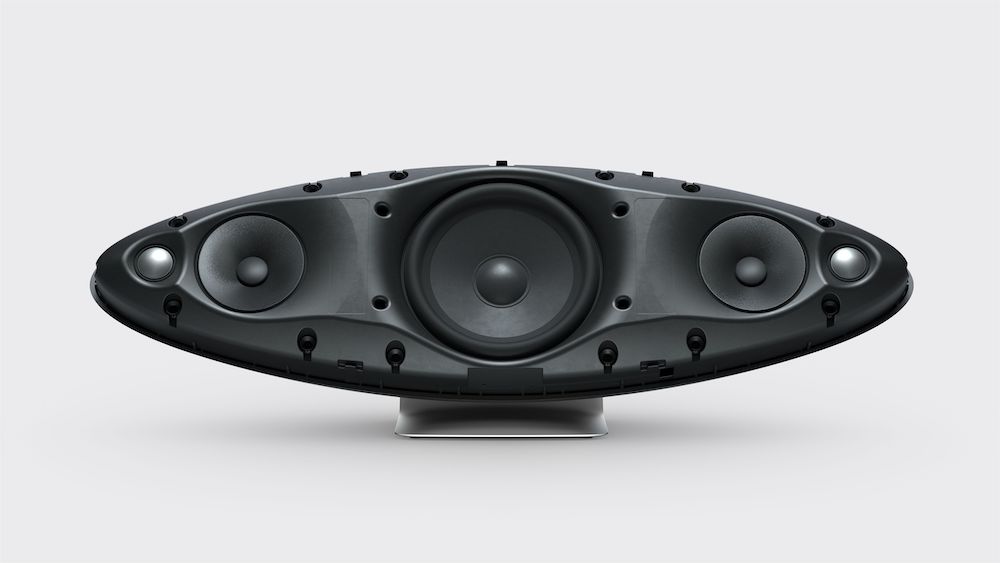Bowers & Wilkins reimagine the Zeppelin speaker for the streaming age

The best loudspeaker isn’t the one that gives the most. It’s the one that loses the least,” noted John Bowers. The co-founder of the eponymous Bowers & Wilkins met his business partner, Roy Wilkins, whilst serving in the Royal Corps of Signals (one of the first units sent into action to relay battlefield comms and information) during WWII. In peacetime, the two set up shop in Worthing, its humble beginnings as a radio and electronics store soon expanding into the design, assembly and production of loudspeakers, and much later, headphones. For over half a century, earnings have been invested into research and development, leading to material and sonic innovations like ‘flowports’ that reduce friction in the air, award-winning diamond tweeters and ‘perfect dipoles’ (see: the Nautilus speaker). Its obsession with sound, of being as faithful and accurate to the original recording as possible, is eloquently expressed through its iconic Zeppelin.
First arriving in 2007, riding the noughties wave of iPod docking, the speaker’s latest iteration has been savvily revised for the streaming age. The striking form of the speaker (named after its resemblance to the rigid airship) is a good example of acoustics informing shape; its reference quality drive unit technologies are placed in dedicated left and right speaker assemblies around a central subwoofer, powered by 240W of amplification. This engineering allows it to fill whatever room it resides with multi-directional stereo sound, capturing and replicating the whole spectrum of a song. Its drive unit technology is now paired with a new high-resolution streaming platform, meaning a stellar performance from a wirelessly connected source – mobile, tablet, computer – or via streaming services like Spotify, Deezer, Soundcloud and TIDAL. Amazon’s voice AI Alexa is also built into the speaker itself, while its digital ‘brain’ has been purposefully built so that it can be upgraded in the future, compatible with other new Zeppelins in a multiroom environment.
Port caught up with director of product marketing and communications, Andy Kerr, to discuss the next generation of the Zeppelin.

The Zeppelin first came on the scene when iPod docking was in full swing and the latest version now has streaming capabilities – how has Bowers & Wilkins kept pace with the changing ways in which we listen to music?
Some decisions were easy. We knew we wanted to remove the iPod dock from the original Zeppelin as we wished to reflect the direction that things were going in the world of portable music devices – by which I mean the shift from dedicated music players to mobile phones and streaming services. At the same time, we knew that we also wanted to open up the product to non-Apple users, so we were determined to offer functionality that made a Zeppelin more appealing to owners of Android devices. Hence the inclusion of wireless features such as Airplay, Bluetooth aptX and Spotify Connect, followed by today’s incorporation of the Bowers & Wilkins Music App.
We feel that today’s Zeppelin is the most connected and complete offering that we’ve ever had in this category. It supports almost every type of wireless listening available, provides high-resolution capability to listeners that have access to compatible streaming services, such as Qobuz, and the Bowers & Wilkins Music App makes both interacting with the product and accessing all of your music more seamless and effortless than ever before. Adding voice interaction via Alexa only increases the range of choice that customers have over how they choose to use their Bowers & Wilkins wireless speaker.
I know its reference quality drive unit technologies are placed in dedicated left and right speaker assemblies around a central subwoofer, but could you expand further on how this form is informed by acoustics? What this distinct shape sonically creates?
Zeppelin started life in prototype form as a speaker created from two separate loudspeaker enclosures. We machined off the bottom of a pair of our LM1 desktop monitors, rotated the cabinet through 90 degrees to arrange them horizontally and then joined them together to create the original Zeppelin form. The advantage of this approach is that it places the two high frequency drive units – or tweeters – as far as possible away from each other at the extreme ends of the enclosure. This helps to create a wider and more spacious stereo image than is typical for a speaker of the size of a Zeppelin.
We then refined the cabinet dimensions to minimise what we call the ‘cabinet baffling effect’. What this essentially means is we are trying to minimise the audible effect of the loudspeaker box around the edges of the drive unit. A Zeppelin tapers away to create an elongated form at each end where there is as little cabinet material as possible around the high frequency and mid-range drive units. This has the effect of creating an even more spacious and room-filling sound where the energy coming from the drive units spreads out into the free air of the room rather than being wasted in vibrating the cabinet around the drive units. Although at first glance it might not seem it, this is the very same approach we apply to our reference-quality 800 Series Diamond loudspeakers.
One last thing: the central subwoofer is located deliberately at the mechanical heart of the Zeppelin. Subwoofers move a lot and by their very nature generate vibration. Mounting the subwoofer centrally in the cabinet minimises unwanted rocking and vibration. It also allows us to carefully curve the back of the Zeppelin cabinet to create a deeper acoustic form with more air for the subwoofer to operate effectively without adding unwanted visual mass to the front of the speaker. The result is big bass from an apparently small speaker.

What makes Bowers & Wilkins drive units special?
Most brands buy off-the-shelf drive units from dedicated suppliers. We’re different: we design, develop and wherever possible manufacture all of our drive units to the same principles and we share drive unit technologies across product categories. The Zeppelin is the perfect example of this philosophy.
The HF drive units are the same as the designs used in our 600 Series loudspeakers. The mid-range drive units employ our FST™ mid-range cone technology as found in all of our large floorstanding loudspeakers. In all cases, we design our drive units to be as low distortion and accurate as we can possibly make them.
Do you have a favourite song at the moment that would sound extremely good through a Zeppelin?
Gabriels – Remember Me. It has a great combination of vocal openness and realism, powerful driving bass and a spacious room filling presentation.




